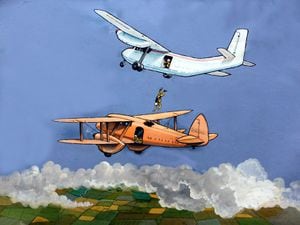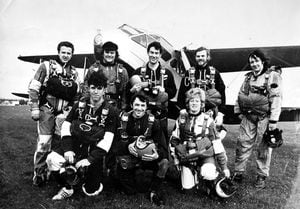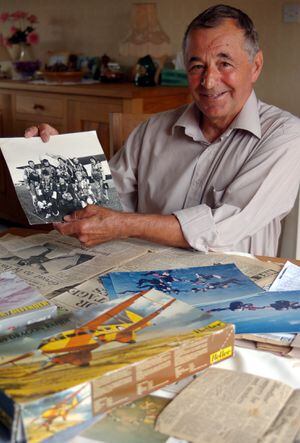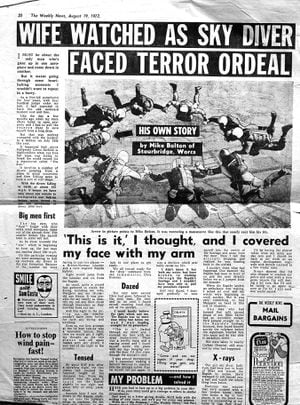Flashback to July 1972 and an aircraft to aircraft skydive
In the annals of skydiving, it must rank as one of the most extraordinary incidents ever.

Skydiver Mike Bolton jumped from one aircraft which had taken off from Halfpenny Green airfield and plunged into the passenger compartment of a plane flying below, which then brought him back to earth.
Mike reckoned he must have been the first person in history to have taken off in one aircraft and landed in another.
This was no James Bond-style stunt but a near-disastrous accident which made headlines.
And Mike was not the only free-faller to have a narrow escape. His colleague Mike Taylor, who had jumped moments before him, also landed on the plane below, and found himself astride the tailplane, before being whipped clear by the slipstream.
The drama happened on July 15, 1972, high above the airfield at Bobbington.

The pair were part of a team called the Endrust Skydivers which were seeking to set a new European record of a star of 14 skydivers. Because of the numbers involved, six jumpers were on board a De Havilland Rapide biplane, and eight, including Mike, were on a Britten-Norman Islander.
There was quite a crowd on the ground to watch the record attempt, including Mike Bolton's wife Margaret and 10-year-old son Simon, who were looking out for his distinctive red and blue parachute through binoculars.
A first attempt on the record failed, so they had another go, and at about 8.45pm the two aircraft had reached the required height of 10,000ft and were flying in formation.
Then came the order to jump from jumpmaster Clive Rumney, and Mike Bolton was the last-but-one to go from the Islander.
But somehow the Rapide had drifted into a position below the Islander.
"I could hardly believe the sight which met me," he said in an interview a few weeks after the incident.
"The Rapide was no more than 30ft below me and I was heading straight for its propellers!

"'This is it' flashed through my mind and I covered my face and my arms instinctively. There was a terrific bang and a tearing sound and I found myself inside the plane with my legs hanging outside the door.
"I'd shot clean through the aircraft's roof. I was almost unconscious yet I remember making a definite decision to clamber into the aircraft rather than let myself fall out again. It was a decision which probably saved my life.
"I didn't know it but both my wrists had been broken in crashing through the Rapide's fuselage and I wouldn't have been able to pull my parachute ripcord.
"Still very dazed, I managed gradually to ease myself into the centre of the fuselage and away from the door. Then I felt the aircraft dropping and realised he was heading back to the airfield.
"I couldn't think what had happened. One moment the Rapide had been in front of us and the next directly below me as I jumped from the Islander."
He added: "The man who had jumped that split second ahead of me, Mike Taylor, had an incredible escape. He'd jumped straight on to the Rapide's fuselage, bounced, then found himself astride the tailplane before the slipstream whirled him into space and he was able to parachute down.

"We were taken to the Corbett Hospital in Stourbridge, still stunned by what had happened.
"Our girl skydiver, Sally Cain, had been just in front of Mike and missed the Rapide by inches. She'd managed to roll herself into a ball and watch the whole thing from below.
"Everyone was amazed that we'd escaped with a few broken bones."
Mike Taylor landed in a cornfield two miles from the airfield with a broken femur and other injuries and, in the gathering dusk, a search plane was sent up to look for him.
Mike Bolton, who had also cracked his pelvis, lived at the time at Stourbridge and was on his 348th jump.
Later he moved to Newtown in Mid Wales. Mike Taylor in later years moved to Adelaide, Australia.
Something of a legend in the skydiving world, Mike Bolton was chief instructor of the London Parachute School for nine years before retiring in 2014, after a 46-year skydiving career and around 7,000 jumps.
His colleagues applauded his landing in windy conditions on his last ever jump at the end of that season, made at the age of 76 – and maybe not as dignified as he would have liked because he was reportedly dragged face-down along the airfield leaving him covered in mud, amid much amusement.





